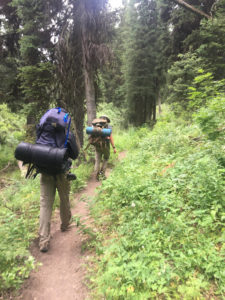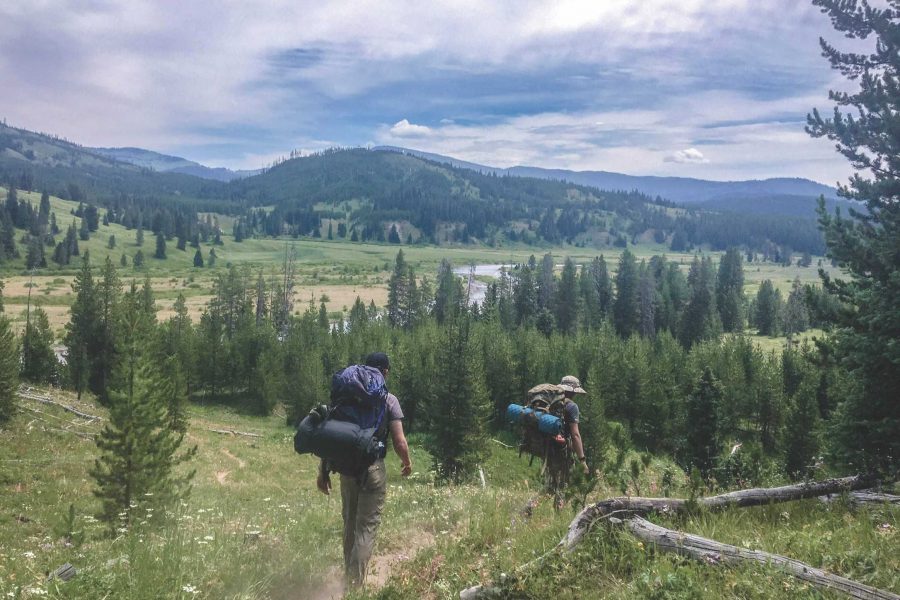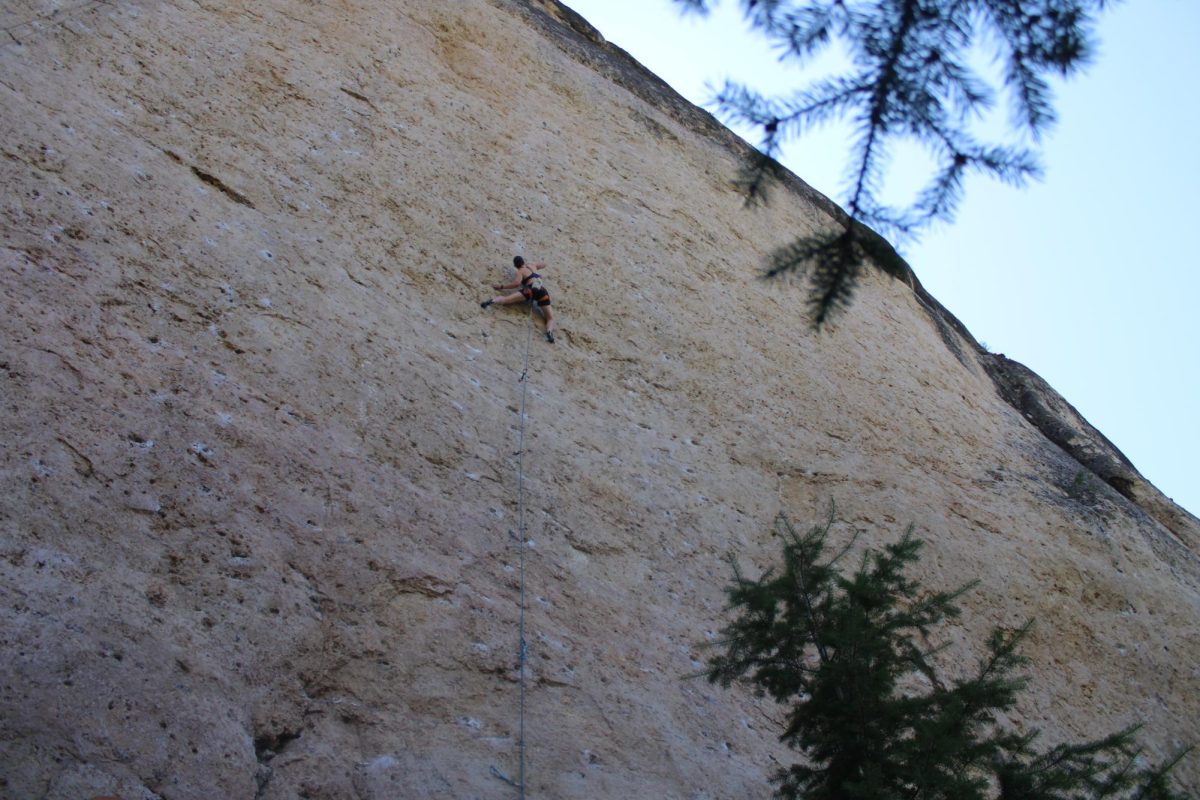Tips to Survive Backpacking
October 2, 2018
The trip started off with high hopes. My two best friends and I hopped in my truck and drove up to Yellowstone to start our three-day backpacking adventure through the southern part of the park. When we arrived, we were given a 20-minute presentation on all the wildlife safety precautions we needed to abide by while we were out in the backcountry and we picked up our bear spray. We all felt prepared and knew what we were doing.
Nobody in our party had ever been to the southern part of Yellowstone and were expecting clearly marked signs on where to enter our trailhead. This was a mistake. We spent 4 hours wandering aimlessly crossing meadows, fording chest deep rivers, and bushwhacking through thick foliage not knowing where we were supposed to stay the night. Since we are spoiled in Utah where bugs are an afterthought, none of us brought bug spray. We got eaten alive! Luckily, our trip turned out great after we got bug spray and found our correct trail. However, the little mistakes we made while in the backcountry caused a lot more stress and danger than needed. Here are a few tips to keep you safe and have your trip be more enjoyable whenever you are in the backcountry.
If you are backpacking in a National Park, checking with a national park ranger stationed where your trailhead is located will provide lots of valuable information to you on conditions in the area and what you might expect in the backcountry. The range should also be able to tell your group where the trail head begins and common land marks along the trail, so you can check your progress while backpacking to your destination.
Secondly, something that is often excluded on other backpacking tips lists, pack BUGSPRAY! We are spoiled out here in Utah with the lack of large quantities of mosquitoes trying to bite your face off. Along with Bugspray also bring an antihistime spray or bennedrill to help with inflmation/allergic reactions to mosquito bites, bee and wasp stings. These medications and sprays can be a trip saver in the backcountry. Always include these essentials in your first aid kit! 
Lastly, always bring a printed map and thoroughly map out the trail you are planning on traveling. Having geographical checkpoints to make sure you are on the correct trail and time estimations to make sure you are on track to make it to your campsite by reasonable times like before sundown can really help you save time that would otherwise be lost. Most importantly though is to actually look at the map you set out. No one wants to be that person that says, “hold up, lets just check the map first before we decide to go right at this fork in the trail.” But “that guy” can save your group hours of unnecessary hiking and headache. Please create a system where you check your map each time you come to a fork in the road. I wish I would have!










